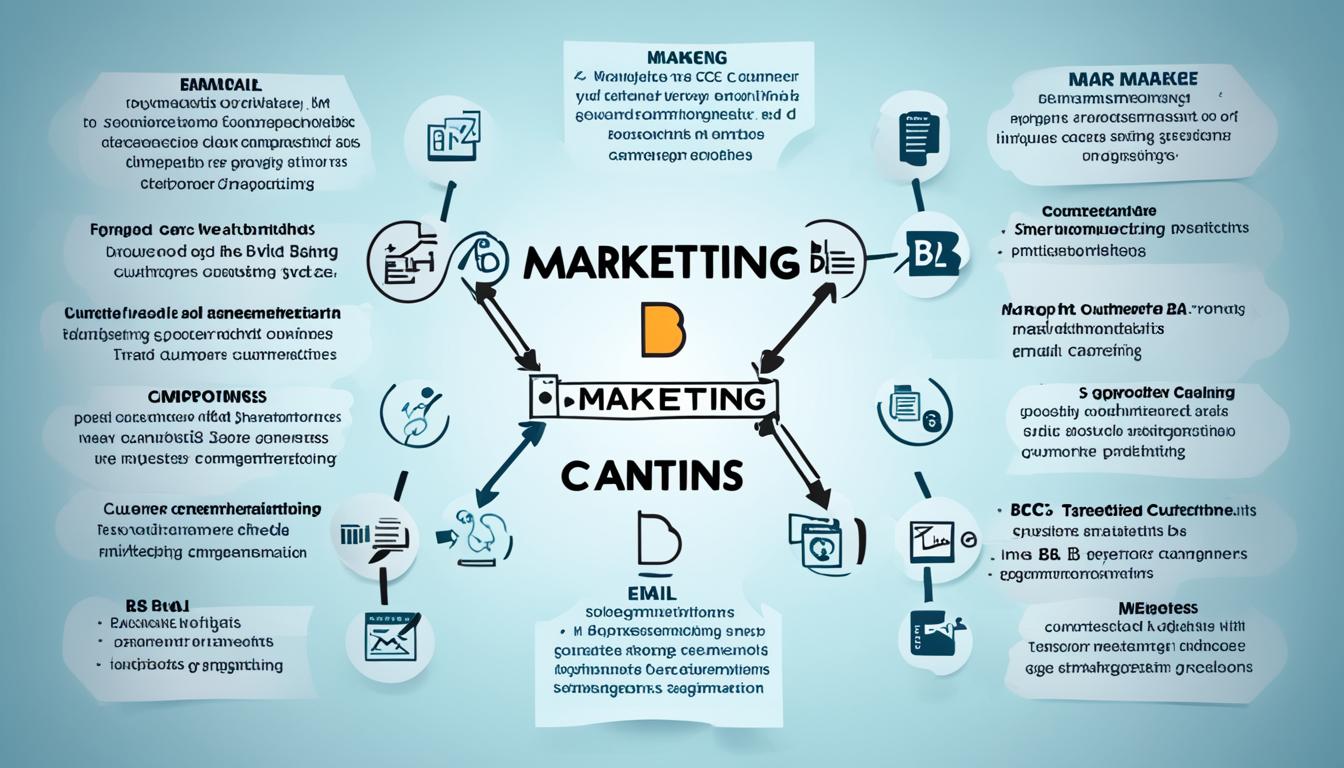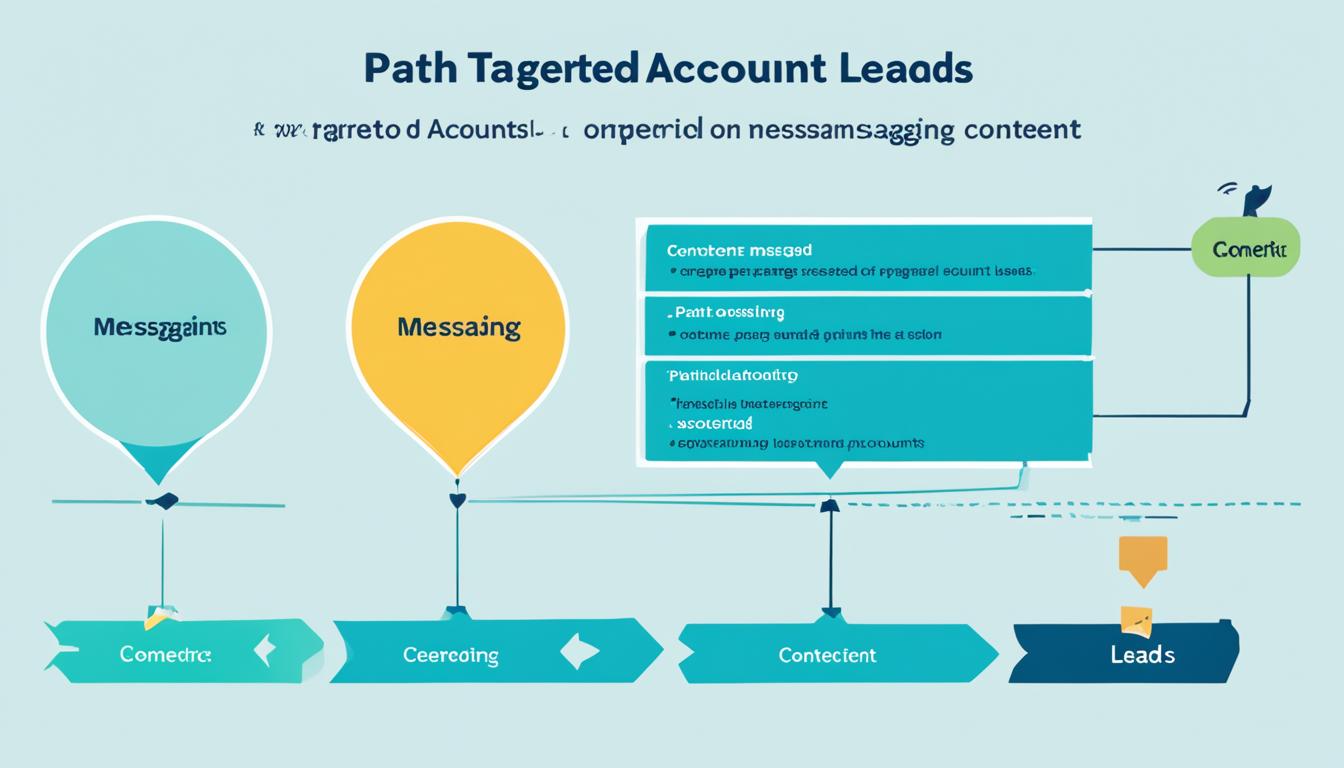Small and midsize businesses (SMBs) can learn valuable lessons from the marketing mistakes made by leading companies. By understanding where these companies went wrong, SMBs can avoid similar pitfalls and launch successful marketing campaigns.
Key Takeaways:
- SMBs can avoid common errors in corporate marketing by studying the blunders made by big companies.
- Social media blunders can negatively impact a brand’s reputation, so SMBs should be cautious and stay updated on trending hashtags.
- Translation errors can damage credibility in new markets, so SMBs must ensure their messaging translates properly.
- Consult with financial teams before implementing promotional giveaways to avoid costly mistakes.
- Insensitive ads can lead to customer alienation, so SMBs should always aim for respect and cultural sensitivity in their campaigns.
Fickle Social Media Atmosphere
In today’s fast-paced digital age, social media has become a powerful tool for businesses to connect with their target audience. However, navigating the fickle social media atmosphere can be a challenge for even the most experienced marketers. As seen in the cases of DiGiorno and Kenneth Cole, social media blunders can have significant consequences for a brand’s reputation.
Both DiGiorno and Kenneth Cole fell victim to the allure of trending hashtags without fully understanding their context. This lack of awareness led to their messages being perceived as insensitive and offensive, causing a backlash from the online community.
Social media marketing offers tremendous opportunities for small and midsize businesses (SMBs) to build brand recognition and engage with their customers. However, it is crucial for SMBs to approach social media platforms with caution and stay informed about the ever-changing trends and conversations.
By staying up-to-date with trending hashtags and understanding their meaning and significance, SMBs can effectively leverage them in their social media marketing strategies. This not only helps in reaching a wider audience but also shows the brand’s relevance and engagement in current discussions.
Furthermore, SMBs should carefully review and proofread their posts to ensure they align with their brand values and do not offend or alienate any specific audience group. Thorough research and a thoughtful approach are essential to avoid falling into the trap of social media blunders.
One way SMBs can navigate the fickle social media landscape is by learning from the experiences of others. By studying the mistakes made by big companies like DiGiorno and Kenneth Cole, SMBs can gain valuable insights and avoid similar pitfalls.
Engaging with Customers: Building Brand Recognition
Social media platforms provide SMBs with unique opportunities to engage with their customers on a personal level. By actively participating in conversations, responding to comments, and sharing relevant content, SMBs can foster a sense of community and build brand loyalty.
Utilizing trending hashtags strategically can also enhance a brand’s visibility and reach on social media. When used appropriately, trending hashtags can help SMBs tap into broader conversations and showcase their brand personality to a wider audience.
Here is an example of how a trending hashtag can be used effectively:
Are you looking for a refreshing summer treat? Try our #CoolConeDelight to beat the heat! 🍦
By using the trending hashtag #CoolConeDelight, the hypothetical business highlights its seasonal product while also joining the conversation around summer treats. This approach not only increases the visibility of the post but also positions the brand as relevant and engaged.
However, it is crucial to thoroughly research and understand the context of trending hashtags before utilizing them in marketing campaigns. What may seem innocent or popular at first glance may have hidden meanings or associations that can backfire, resulting in unintended consequences for the brand.
Ultimately, SMBs must approach social media marketing with caution and ensure their messages align with their brand values while staying informed about the ever-changing social media landscape. By doing so, they can maximize the benefits of social media platforms and avoid the pitfalls of social media blunders.
Translation Gaffes
In the realm of international marketing and global branding, translation errors can have disastrous consequences for companies. Coca-Cola, Pepsi, and Procter & Gamble all experienced significant backlash due to translation gaffes in foreign markets. These mistakes not only tarnish a brand’s reputation but also hinder its ability to connect with international audiences.
SMBs embarking on global expansion must prioritize accurate translation to avoid damaging their credibility and making cultural missteps. A comprehensive understanding of local languages, nuances, and cultural contexts is essential for effective international marketing.
When crafting messaging for new markets, SMBs should consider the following:
- Working with professional translators who are native speakers of the target language
- Conducting thorough research on cultural norms, idioms, and sensitivities
- Adapting marketing materials to resonate with local audiences
- Testing translations with focus groups or local partners before launch
By investing time and resources into accurate translation and localization, SMBs can ensure their message is well-received and their brand maintains a positive image globally.
Illustrating the importance of translation gaffes in international marketing, consider the following example:
| Company | Error | Impact |
|---|---|---|
| Coca-Cola | Mistranslated “Coca-Cola” as “Bite the Wax Tadpole” in Mandarin | Significant backlash and negative perception of the brand in China |
| Pepsi | Translated “Pepsi Brings You Back to Life” as “Pepsi Brings Your Ancestors Back from the Grave” in Chinese | Mockery and loss of consumer trust in the Chinese market |
| Procter & Gamble | Used a character associated with death on its packaging in Japan | Product boycotts and a decline in sales due to cultural insensitivity |
Promotional Giveaways Gone Wrong
American Airlines and McDonald’s are two examples of big companies that have made costly mistakes when it comes to their promotional giveaways. These blunders serve as important lessons for small and midsize businesses (SMBs) that are considering running similar marketing campaigns.
One common mistake that both American Airlines and McDonald’s made was not consulting their financial teams before making promises to customers. It’s crucial for SMBs to carefully evaluate the financial implications of any promotional giveaways or customer loyalty programs they plan to implement. By involving their financial teams, SMBs can ensure that they have a clear understanding of the costs involved and avoid any unexpected financial burdens.
Another approach that SMBs can consider is implementing customer loyalty programs and offering promotional products as alternatives to traditional giveaways. Not only do these strategies help build customer loyalty, but they also allow businesses to provide value to their customers without incurring significant expenses.
For businesses that choose to offer promotional products, it’s important to select items that are relevant to their target audience and align with their brand identity. By offering products that customers find useful and appealing, SMBs can increase the chances of customer engagement and brand recognition.
Alienating Customers with Insensitive Ads
When it comes to marketing campaigns, customer respect and cultural sensitivity are key factors for success. Companies like Bic and Dove have learned this the hard way after facing significant backlash for ads that were perceived as insensitive and disrespectful. These incidents serve as important reminders for small and midsize businesses (SMBs) to always approach their marketing efforts with a tone of respect and mindfulness towards their diverse customer base.
Cultural sensitivity plays a vital role in ensuring that marketing campaigns resonate positively with customers from various backgrounds. It involves understanding the nuances of different cultures, traditions, and social issues to avoid unintentionally offending or marginalizing specific groups.
By embracing cultural sensitivity, SMBs can create marketing campaigns that celebrate diversity and inclusivity, making customers feel seen, valued, and empowered. This approach not only helps in building stronger customer relationships but also establishes a positive brand image that resonates with the values and beliefs of the target audience.
The Power of Inclusive Advertising
Implementing inclusive advertising practices allows businesses to connect with their customers on a deeper level. By representing a diverse range of individuals in their campaigns, SMBs can showcase their commitment to inclusivity and inspire customer loyalty.
Research shows that customers are more likely to support brands that align with their values. In fact, 64% of consumers make purchase decisions based on a company’s values and stance on social issues. By demonstrating a genuine understanding and respect for cultural diversity, SMBs can attract and retain customers who appreciate their commitment to inclusivity.
Avoiding Insensitive Ads: Guidelines for SMBs
To ensure that your marketing campaigns are inclusive and respect customer diversity, consider implementing the following guidelines:
- Invest in diversity training for your marketing team to foster cultural sensitivity and awareness.
- Conduct thorough research on different cultures and their sensitivities before launching campaigns in new markets.
- Avoid stereotypes and portray diverse individuals in a realistic and authentic manner.
- Listen to customer feedback and take prompt action if any concerns or issues arise.
By following these guidelines, SMBs can navigate the complex landscape of cultural sensitivity and create marketing campaigns that genuinely resonate with their customers. Remember, customer respect and cultural sensitivity are not just buzzwords; they are essential aspects of building strong customer relationships and establishing a reputable brand image.
| Benefits of Cultural Sensitivity in Marketing | Actions to Avoid Insensitive Ads |
|---|---|
| Maintains customer loyalty | Invest in diversity training for the marketing team |
| Builds a positive brand image | Conduct thorough research on different cultures |
| Attracts a diverse customer base | Avoid stereotypes |
| Increases customer trust and engagement | Listen to customer feedback and take prompt action |
Targeting the Right Keywords
In the world of digital marketing, targeting the right keywords is essential for achieving organic traffic and visibility. Andy Crestodina’s experience serves as a valuable lesson in the importance of keyword research and optimization for successful SEO strategies.
The Role of Keyword Research
Effective keyword research involves discovering and analyzing the most relevant and valuable search terms that target audiences use when searching for products, services, or information online. By identifying these keywords, businesses can craft content that aligns with user intent, ultimately driving organic traffic to their websites.
Keyword research provides insights into the search volume, competition level, and intent behind specific keywords. It helps businesses understand the language their target audience uses and the topics they are interested in, enabling the creation of highly targeted campaigns.
Choosing the Right Keywords
When choosing keywords, SMBs should consider a mix of factors, including search volume, competition, and intent. High search volume indicates a higher potential for traffic, but it also means facing more competition. Therefore, targeting keywords with moderate search volume and lower competition can yield better results.
Understanding user intent is crucial in selecting keywords. Different search queries reflect varying stages of the buyer’s journey, and tailoring content to match the user’s intent can increase the chances of conversion. Businesses should focus on long-tail keywords and consider the specific intent behind each keyword to attract the right audience.
The Impact of Targeting the Right Keywords
Targeting the right keywords can significantly impact a business’s SEO strategy and overall success. By optimizing their content for these keywords, businesses can:
- Improve organic search rankings
- Increase organic traffic
- Enhance user engagement and site visibility
- Attract a more relevant and targeted audience
- Generate higher conversion rates
Moreover, targeting the right keywords aligns businesses with user needs and preferences, improving the overall user experience and building trust and credibility among consumers.
Incorporating Targeted Keywords
Once the right keywords are identified, it is crucial to incorporate them strategically across different elements of the website, including titles, headings, meta descriptions, URLs, and content. However, it is essential to maintain a natural flow and avoid keyword stuffing, as search engines prioritize user experience and quality content.
| Best Practices for Keyword Optimization |
|---|
| Place keywords in page titles and headings |
| Include keywords in meta descriptions |
| Optimize URLs with relevant keywords |
| Create high-quality, engaging content using targeted keywords |
| Utilize keywords in image alt tags and file names |
By implementing these best practices, SMBs can increase their visibility in search engine results pages and attract organic traffic from their target audience.
Building Accurate Buyer Personas
When it comes to successful marketing strategies, one key element is understanding your target audience. Building accurate buyer personas is essential in tailoring your marketing efforts to effectively reach and engage with potential customers. Brandon Gains, a marketing expert, discovered the importance of data and research in creating these personas.
Buyer personas are fictional representations of your ideal customers, based on customer research and data. By grounding these personas in thorough research, small and midsize businesses (SMBs) can gain valuable insights into the demographics, needs, desires, and pain points of their target audience.
Customer research is the foundation of accurate buyer personas. By utilizing surveys, interviews, and data analysis, SMBs can gather essential information about their existing and potential customers. This research helps identify trends, preferences, and behaviors that can inform marketing strategies and campaigns.
Benefits of Building Accurate Buyer Personas
Creating accurate buyer personas offers several benefits:
- Targeted Marketing: By understanding your audience’s unique characteristics and preferences, you can tailor your marketing messages and campaigns to better resonate with your target customers.
- Improved Customer Experience: Accurate buyer personas help you anticipate your customers’ needs and deliver personalized experiences, resulting in increased customer satisfaction and loyalty.
- Streamlined Product Development: Knowing your audience’s pain points and motivations allows you to develop products and services that align with their needs, increasing the chances of success in the market.
- Effective Channel Selection: With a clear understanding of your target audience, you can identify the most effective marketing channels to reach and engage with them, optimizing your marketing budget and resources.
Here’s an example of how accurate buyer personas can inform marketing strategies:
| Buyer Persona | Demographics | Needs & Pain Points | Marketing Strategy |
|---|---|---|---|
| Young Professionals | Age: 25-34 Occupation: Urban professionals Income: $50,000-$75,000 |
– Convenient and time-saving solutions – Work-life balance challenges – Financial stability concerns |
– Social media advertising targeting professionals and urban dwellers – Highlighting convenience and time-saving benefits of products – Promoting work-life balance and financial stability through product benefits |
| Retirees | Age: 65+ Income: Pensioners, savings, Social Security |
– Health and wellness concerns – Financial security in retirement – Leisure activities |
– Advertising in retirement community publications and websites – Highlighting health and wellness benefits of products – Offering discounts or special promotions for retirees |
By segmenting their audience based on accurate buyer personas, SMBs can develop targeted marketing strategies that address the specific needs and preferences of each segment, ensuring higher conversion rates and customer satisfaction.
Building accurate buyer personas requires a continuous effort to gather data, analyze trends, and refine your understanding of your target audience. By incorporating this practice into your marketing strategies, you can enhance your campaigns, improve customer engagement, and drive business growth.
Don’t Skip Quality Assurance
Quality assurance is a critical step in ensuring the success of your marketing campaigns. Scott McLeod and Derric Haynie learned this lesson firsthand, experiencing the consequences of neglecting quality assurance in their campaigns. To avoid similar pitfalls, small and midsize businesses (SMBs) must prioritize thorough testing before launching their campaigns, websites, and landing pages.
By conducting comprehensive quality assurance checks, SMBs can enhance the user experience and maximize campaign performance. Quality assurance involves meticulously reviewing every aspect of your marketing materials, including content, design, functionality, and user interactions.

Through quality assurance, businesses can identify and rectify any issues or errors that could hinder the effectiveness of their marketing efforts. By ensuring a seamless user experience, SMBs can build trust with their target audience and deliver on their marketing promises.
To guide SMBs in their quality assurance process, here is a checklist of important elements to consider:
- Content accuracy and relevance
- Website functionality across different devices and browsers
- Navigation and user flow
- Form validation and submission process
- Load time and page speed
- Compatibility with accessibility standards
Implementing a rigorous quality assurance process will help SMBs mitigate potential risks, enhance user experience, and improve overall campaign performance. Don’t underestimate the power of thorough testing before launching your marketing initiatives.
| Benefits of Quality Assurance | Consequences of Skipping Quality Assurance |
|---|---|
| Ensures a seamless user experience | Poor user experience leads to high bounce rates and low conversions |
| Identifies and rectifies errors and issues | Unresolved issues can result in brand damage and negative customer perception |
| Builds trust with the target audience | Trust is compromised when users encounter broken links or incorrect information |
| Optimizes campaign performance | Ineffective campaigns waste resources and yield poor ROI |
Validate New Ideas with Customer Research
One of the most effective ways to ensure the success of your marketing campaigns is to validate new ideas through customer research. By incorporating customer feedback and making research-backed decisions, you can create data-driven marketing strategies that resonate with your target audience and drive results.
Marc Bitanga’s experience emphasizes the value of customer research in making informed marketing decisions. SMBs should gather both qualitative and quantitative data to gain insights into customer preferences, pain points, and behavior. This research can provide valuable guidance when developing new products, refining existing offerings, or launching marketing campaigns.
Qualitative research methods like surveys, interviews, and focus groups can help you understand the thoughts, emotions, and motivations of your customers. This feedback can provide valuable insights into their needs and desires, helping you tailor your marketing messages and offerings to effectively meet their expectations.
On the other hand, quantitative research allows you to gather numerical data and statistics, providing a deeper understanding of customer behaviors, trends, and preferences. By analyzing data such as purchase patterns, website analytics, and customer demographics, you can identify key market segments and target them with precision.
Incorporating customer feedback into your decision-making process can also help you uncover potential issues or areas for improvement before investing time and resources into a new campaign or product launch. By listening to your customers and understanding their concerns, you can make proactive adjustments and deliver offerings that truly resonate with their needs.
Ultimately, a data-driven approach backed by customer research can help you make more informed marketing decisions, mitigate risks, and increase the effectiveness of your campaigns. By validating your ideas and strategies with real customer insights, you can confidently launch initiatives that have a higher likelihood of success.
Benefits of Customer Research:
- Gaining a deeper understanding of customer preferences and behaviors
- Identifying market trends and key segments for targeted campaigns
- Uncovering potential issues and areas for improvement
- Creating data-driven marketing strategies that resonate with the target audience
| Customer Feedback | Research-Backed Decisions |
|---|---|
| Understand customer needs and desires | Gather qualitative and quantitative data |
| Improve product offerings and marketing messages | Analyze customer behavior and demographics |
| Identify and target key market segments | Make data-driven marketing decisions |
Test One Change at a Time
In the world of marketing, continuous improvement is key to driving successful campaigns. Casie Gillette, a seasoned marketer, emphasizes the importance of testing one change at a time to optimize campaign performance. By employing A/B testing, SMBs can assess the impact of specific changes and make data-driven decisions to maximize results.
A/B testing involves creating two or more versions of a marketing element, such as a landing page or email, and testing them simultaneously on different segments of the target audience. By measuring the response and conversion rates, marketers can identify which version performs better and optimize their campaigns accordingly.
This approach allows for systematic optimization by making incremental changes and analyzing the data. Rather than implementing multiple modifications at once, which could hamper accurate analysis, focusing on one change at a time provides clarity on the impact of that specific alteration. This method yields valuable insights into what works best for the target audience, helping SMBs refine their marketing strategies.
Data analysis is a critical component of A/B testing. Marketers should closely monitor the metrics and metrics and leverage tools like Google Analytics to gather quantitative data. By tracking key performance indicators (KPIs) such as click-through rates, conversions, and bounce rates, marketers can derive meaningful insights that drive campaign optimization and success.
Benefits of A/B Testing
- Optimized Campaigns: A/B testing enables marketers to identify the most effective marketing elements and optimize their campaigns accordingly, leading to improved conversion rates and overall campaign performance.
- Data-Driven Decision Making: By analyzing the data collected through A/B testing, marketers can make informed decisions based on objective evidence rather than relying on assumptions or intuition.
- Reduced Risk: Testing one change at a time mitigates the risk of implementing multiple alterations simultaneously, ensuring a clear understanding of the impact of each modification.
- Continuous Improvement: A/B testing facilitates an iterative approach to marketing, allowing SMBs to make gradual improvements and continuously refine their strategies for better results.
Implementing A/B testing requires careful planning and execution. Marketers should define clear objectives, create relevant hypotheses, and ensure that the testing process is statistically valid. By adopting a systematic and data-driven approach, SMBs can leverage A/B testing to optimize their campaigns and achieve marketing success.
| Key Steps for Effective A/B Testing |
|---|
| 1. Define clear objectives and hypotheses |
| 2. Create variations of marketing elements |
| 3. Split the target audience into control and test groups |
| 4. Randomly assign the variations to each group |
| 5. Launch the test and collect data |
| 6. Analyze the results and draw conclusions |
| 7. Implement the winning variation and iterate for continuous improvement |
Value Brand Loyalty and Avoid Drastic Changes
Brand loyalty is a vital component of a successful marketing strategy. Building a loyal customer base takes time, effort, and consistent delivery of quality products or services. However, even well-established brands can make the mistake of underestimating the importance of brand loyalty and the potential risks associated with drastic product changes.
A prime example of this is Coca-Cola’s infamous New Coke failure in 1985. In an attempt to compete with their rival, Pepsi, Coca-Cola decided to reformulate their beloved original Coca-Cola recipe. The decision was met with a wave of public backlash, as consumers expressed their dissatisfaction and nostalgia for the iconic beverage. The company recognized their mistake and eventually brought back the original formula as Coca-Cola Classic. This episode served as a powerful reminder of the deep emotional connection consumers have with their favorite brands and products.
Small and midsize businesses (SMBs) should take heed of this cautionary tale and carefully evaluate the potential impact of major product changes. Consider both the functional and emotional aspects of your offerings. While innovation and evolution are important, sudden and drastic changes can alienate loyal customers and erode brand trust and customer satisfaction.
To illustrate the significance of brand loyalty and the risks of drastic product changes, let’s take a closer look at a hypothetical case study:
The Case of XYZ Electronics Company
XYZ Electronics is a well-established brand known for its high-quality home appliances. Their flagship product, the XYZ Refrigerator, has a loyal customer base that values its durability, energy efficiency, and sleek design. Seeking to capitalize on the latest market trends, XYZ Electronics contemplates a drastic redesign of the XYZ Refrigerator by removing some of its key features and implementing a completely new aesthetic.
Recognizing the potential impact on brand loyalty and customer satisfaction, XYZ Electronics decides to conduct extensive market research and gather customer feedback before making any hasty decisions. The findings reveal that customers highly value the existing features and design elements of the XYZ Refrigerator and have developed a strong emotional attachment to the brand. They appreciate the reliability and performance that the product delivers.
Armed with this valuable insight, XYZ Electronics decides to focus their efforts on enhancing the existing product instead of completely overhauling it. They introduce subtle improvements, such as increased energy efficiency and smart connectivity features, while maintaining the core elements that customers love.
This customer-centric approach not only preserves brand loyalty but also ensures that customers continue to enjoy the benefits they expect from the XYZ Refrigerator. By avoiding drastic changes that disrupt the emotional connection customers have with the brand, XYZ Electronics successfully leverages their existing customer base to drive sales and maintain a competitive edge in the market.
Conclusion
Marketing lessons from big companies’ mistakes offer valuable insights for small and midsize businesses (SMBs) seeking to launch successful campaigns and avoid costly blunders.
One key lesson is the importance of social media awareness. DiGiorno and Kenneth Cole’s social media blunders demonstrate the need for careful monitoring and understanding of trending hashtags. SMBs must navigate the fickle social media atmosphere by staying up-to-date on conversations and trends to effectively engage with customers and build brand recognition.
Cultural sensitivity is another crucial aspect of marketing campaigns. Companies like Bic and Dove faced significant backlash due to ads perceived as insensitive and disrespectful. SMBs must market with respect, empowering their customers and avoiding alienating them with insensitive messaging.
Inaccurate targeting can lead to wasted resources and missed opportunities. Andy Crestodina’s experience highlights the importance of keyword research and optimization for organic traffic. SMBs should invest time in understanding their target audience’s search intent and competition to maximize campaign performance.
FAQ
What are some marketing mistakes made by big companies?
Some marketing mistakes made by big companies include social media blunders, translation gaffes, costly promotional giveaways, insensitivity in ads, targeting the wrong keywords, inaccurate buyer personas, skipping quality assurance, neglecting customer research, making multiple changes at once, and disregarding brand loyalty.
How can small and midsize businesses (SMBs) avoid marketing blunders?
SMBs can avoid marketing blunders by staying aware of social media trends, conducting proper research and translations for international markets, consulting financial teams before making promises, marketing with respect and sensitivity, targeting the right keywords through research, creating accurate buyer personas, thoroughly testing campaigns, gathering customer feedback, making incremental changes and analyzing results, and carefully evaluating the impact of major changes on established products.
What can we learn from the mistakes made by big companies in social media?
We can learn the importance of understanding the context of trending hashtags, effectively using social media platforms to engage with customers, and staying cautious of the ever-changing trends and conversations on social media to avoid serious blunders.
How can SMBs avoid damaging their credibility in international markets?
SMBs can avoid damaging their credibility in international markets by ensuring their messaging and language translate properly, conducting thorough cultural sensitivity research, and being aware of potential translation gaffes that can create backlash.
What should SMBs consider before launching promotional giveaways?
SMBs should consult their financial teams before making promises to customers for promotional giveaways and consider implementing loyalty programs and promotional products as alternatives to avoid costly mistakes.
How can SMBs market their products and services with respect?
SMBs should always market with a tone of respect, aim to empower their customers through their ads, and avoid creating ads that can be perceived as insensitive or disrespectful.
What is the significance of targeting the right keywords in marketing campaigns?
Targeting the right keywords is crucial for organic content to rank in search engine results, and SMBs should conduct thorough research to optimize their campaigns and choose phrases with a good mix of search volume, intent, and competition.
How can SMBs create accurate buyer personas?
SMBs can create accurate buyer personas by grounding them in research and data, gathering qualitative and quantitative information about their target audience, and tailoring their marketing efforts accordingly.
Why is quality assurance important in marketing campaigns?
Quality assurance is important in marketing campaigns to ensure a seamless user experience, identify and fix any issues or flaws, and maximize the performance of campaigns, websites, and landing pages.
How can SMBs make informed marketing decisions?
SMBs can make informed marketing decisions by conducting customer research, gathering qualitative and quantitative data, validating their ideas, and incorporating customer input into their product and marketing strategies.
What is the recommended approach to testing and optimization in marketing?
SMBs should approach testing and optimization with a systematic approach, making incremental changes, testing one change at a time, and analyzing the results to drive continuous improvement in their campaigns.
Why should SMBs value brand loyalty and be cautious about drastic changes?
SMBs should value brand loyalty because changing beloved products can risk losing customer trust and satisfaction. SMBs should carefully evaluate the potential impact of major changes, considering both the functional and emotional aspects, to avoid damaging their brand reputation.
What lessons can be learned from the mistakes made by big companies in marketing?
Marketers can learn valuable lessons from big companies’ mistakes, including the importance of social media awareness, cultural sensitivity, accurate targeting, thorough testing, customer research, incremental changes, and brand loyalty to launch successful marketing campaigns and avoid costly blunders.





